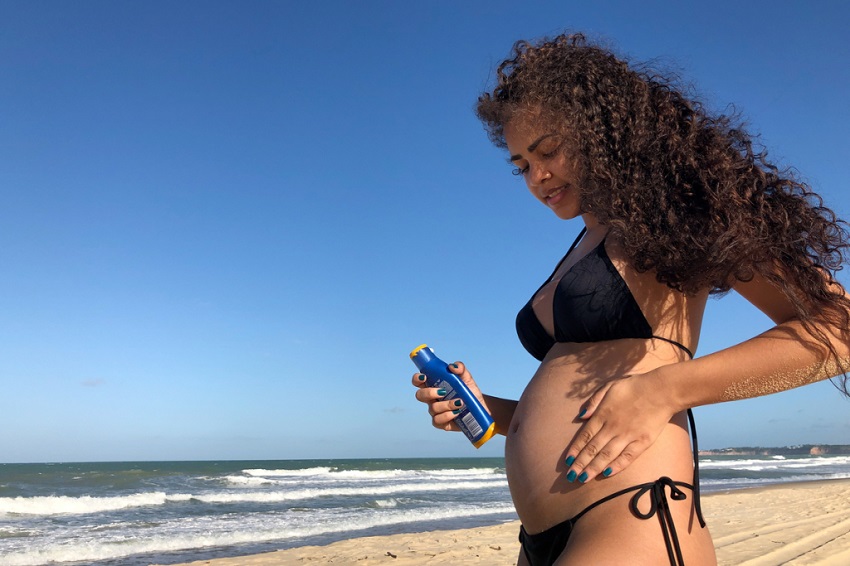As an expectant mother, it’s only natural to have concerns about how your actions and choices may affect the health and well-being of your baby. One question that often arises is whether tanning while pregnant can pose any risks to the developing fetus. In this article, we will delve into this topic and provide you with a comprehensive understanding of the potential implications. Please keep in mind that it’s always important to consult with your healthcare provider for personalized advice regarding your specific situation.
The Safety of Tanning Beds During Pregnancy
Understanding Tanning Beds
Tanning beds, also known as sunbeds, are devices that emit ultraviolet (UV) radiation to produce a tan on the skin. They are designed to mimic natural sunlight and can provide exposure to UVA and UVB rays. UVA rays are responsible for the immediate tanning effect, while UVB rays are more closely associated with sunburn. It’s worth noting that both UVA and UVB rays can penetrate the skin and potentially cause damage. When it comes to tanning while pregnant, it’s essential to consider the pros and cons of tanning while pregnant.
Potential Risks and Considerations
When it comes to tanning beds and pregnancy, several factors should be taken into account. The American Pregnancy Association advises against the use of tanning beds during pregnancy due to the potential risks involved. Here are some key reasons to be cautious:
- Overheating: Tanning beds can raise the body’s core temperature, which may increase the risk of birth defects or other complications.
- Dehydration: Extended periods of exposure to tanning beds can lead to dehydration, which is particularly concerning during pregnancy when maintaining proper hydration is crucial.
- Skin Sensitivity: Pregnant women often experience changes in their skin, including increased sensitivity and a higher likelihood of developing skin rashes or burns. Exposure to UV rays from tanning beds can exacerbate these issues.
- Increased Melasma: Melasma, a condition characterized by dark patches on the skin, is more common during pregnancy due to hormonal changes. Tanning can further darken these patches, causing discomfort and a negative impact on self-esteem.
Alternatives to Tanning Beds
Given the potential risks associated with tanning beds, it’s advisable to explore alternative methods for achieving a sun-kissed glow during pregnancy. Here are some safer alternatives to consider:
- Self-Tanning Lotions: Self-tanners, also known as sunless tanning lotions, offer a viable alternative to tanning beds. These products work by temporarily tinting the outermost layer of the skin and do not involve exposure to UV radiation.
- Bronzing Powders: Bronzing powders can be used to add a touch of color to the face and body without the need for sun exposure. They are available in various shades and can provide a natural-looking tan.
- Protective Clothing: Wearing clothing that provides adequate coverage, such as wide-brimmed hats, long-sleeved shirts, and pants, can help shield your skin from the sun’s harmful rays.
- Seek Shade: Opting for shaded areas or staying indoors during peak sun hours can significantly reduce your exposure to UV radiation.
The Importance of Sun Protection during Pregnancy
While it’s understandable to desire a sun-kissed complexion, it’s crucial to prioritize sun protection, especially during pregnancy. Here are some essential tips to keep in mind:
- Apply Sunscreen: Choose a broad-spectrum sunscreen with a high Sun Protection Factor (SPF) of 30 or higher. Apply it generously to all exposed areas of the skin, and reapply regularly, especially after swimming or sweating.
- Stay Hydrated: Proper hydration is essential for both your well-being and the healthy development of your baby. Drink plenty of water throughout the day, especially when spending time outdoors.
- Cover Up: Wear lightweight, loose-fitting clothing that covers as much skin as possible. Don’t forget to protect your face with a wide-brimmed hat and sunglasses that provide UV protection.
- Seek Shade: Whenever possible, seek shade or create your own shade with an umbrella or sun-protective tent. This can help minimize your overall exposure to direct sunlight.
- Monitor Sun Exposure: Be mindful of the amount of time you spend in the sun and take breaks indoors to prevent overheating.
In conclusion, while the desire for a sun-kissed glow during pregnancy is understandable, it’s important to prioritize the safety and well-being of both yourself and your baby. Tanning beds, with their potential risks of overheating, dehydration, and skin sensitivity, are generally advised against during pregnancy. Instead, explore safer alternatives like self-tanning lotions, bronzing powders, and protective clothing to achieve a healthy and natural-looking glow. Remember to practice sun protection measures, such as applying sunscreen, seeking shade, and staying hydrated, to safeguard your skin from the sun’s harmful rays. By making informed choices and consulting with your healthcare provider, you can ensure a safe and enjoyable pregnancy experience.
For more information and personalized advice, please consult with your healthcare provider.


